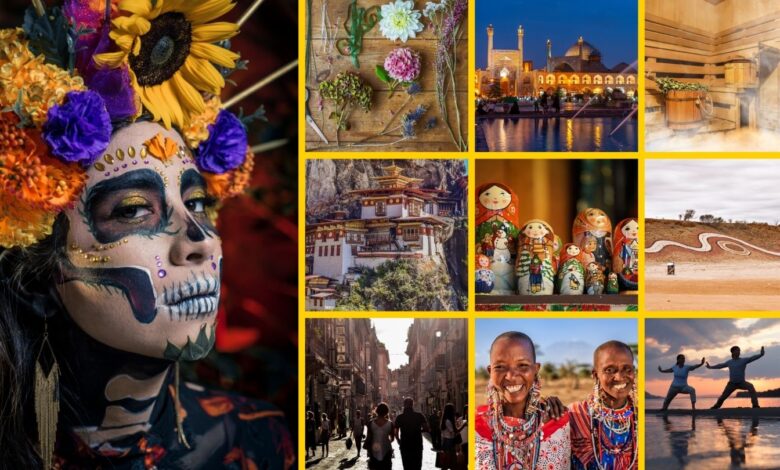“Exploring Tribe Concepts: Unveiling the Rich Tapestry of Cultural Diversity”

Tribes, an ancient social construct, have played a pivotal role throughout history, shaping cultures and communities. In this article, we delve into the intricate world of “Tribe Concepts,” exploring their characteristics, significance, challenges, and the contemporary relevance of these social units.
I. Definition of Tribe Concepts
At its core, a tribe is a social group united by shared customs, traditions, and often a common ancestry. These communities have existed for centuries, providing a sense of identity and belonging to their members.
II. Historical Significance
Tribes have been fundamental in shaping human civilization. From the nomadic tribes of ancient times to indigenous communities, their social structure and cultural practices have influenced societies globally.
A. Social Structure
1. Leadership
Tribes typically have a hierarchical structure led by a chief or elder. This leadership plays a crucial role in decision-making and conflict resolution.
2. Roles and Responsibilities
Members of a tribe often have distinct roles based on age, gender, or skills, contributing to the overall functioning of the community.
B. Cultural Practices
1. Traditions
Tribe concepts are deeply rooted in traditions passed down through generations. These traditions encompass rituals, ceremonies, and storytelling that strengthen the fabric of the community.
2. Rituals and Ceremonies
Rituals and ceremonies mark significant events, fostering a sense of unity and shared history among tribe members.
III. Importance in Modern Society
In today’s fast-paced world, the concept of tribes remains relevant, offering individuals a source of identity and connection in an increasingly globalized society.
A. Identity and Belonging
Tribes provide individuals with a sense of identity, fostering a strong bond that goes beyond geographical boundaries.
B. Preservation of Cultural Heritage
The rich cultural heritage of tribes contributes to the diversity of the global cultural tapestry. Efforts to preserve these traditions are essential for maintaining this diversity.
IV. Types of Tribes
As societies evolve, so do the types of tribes that emerge. From indigenous tribes deeply connected to nature to urban tribes shaped by modern living, and even online tribes bound by shared interests, the concept of tribes continues to evolve.
A. Indigenous Tribes
Indigenous tribes often hold unique knowledge about sustainable living and environmental conservation, making their preservation crucial for the planet.
B. Urban Tribes
In urban settings, individuals form tribes based on shared lifestyles, interests, or professions, creating micro-communities within larger cities.
C. Online Tribes
The digital age has given rise to online tribes, where individuals connect globally based on shared passions or ideologies, transcending physical boundaries.
V. Challenges Faced by Tribes
Despite their resilience, tribes face various challenges in the modern world, posing threats to their cultural identity and well-being.
A. Cultural Erosion
Globalization and modernization often lead to the erosion of tribal cultures, risking the loss of invaluable traditions.
B. Economic Disparities
Tribal communities frequently face economic challenges, hindering their development and perpetuating cycles of poverty.
C. Discrimination and Marginalization
Discrimination against tribes, both historically and in contemporary society, remains a significant issue, affecting their access to resources and opportunities.
VI. Revival of Tribal Cultures
Efforts to revive and preserve tribal cultures are essential for maintaining global diversity and fostering understanding among different communities.
A. Initiatives and Programs
Numerous initiatives focus on empowering tribes economically, socially, and culturally, aiding in the preservation of their way of life.
B. Role of Education
Education plays a vital role in empowering tribal communities, providing them with the tools to navigate the challenges of the modern world while preserving their unique identity.
VII. Impact on Global Culture
Tribes, though often seen as localized entities, have a significant impact on global culture, influencing art, music, and sustainable living practices.
A. Influence on Art and Music
Tribal art and music often inspire contemporary artists, contributing to the richness and diversity of the global creative landscape.
B. Contributions to Sustainable Living
Tribal communities’ sustainable practices offer valuable lessons in ecological conservation, providing insights for addressing pressing environmental issues.
VIII. The Role of Technology in Connecting Tribes
In an ironic twist of fate, technology, often considered a disruptor of traditional lifestyles, plays a crucial role in connecting tribes and preserving their cultural heritage.
A. Social Media and Networking
Online platforms enable tribes to connect globally, fostering collaboration, knowledge sharing, and support.
B. Digital Preservation of Traditions
Digital tools allow tribes to document and share their traditions, ensuring their preservation for future generations.
IX. Case Studies
Examining successful tribal initiatives and understanding the challenges they overcame provides valuable insights into effective strategies for preserving tribal cultures.
A. Successful Tribal Initiatives
Highlighting specific examples where tribes successfully navigated challenges and thrived, showcasing resilience and adaptability.
B. Challenges Overcome
Examining instances where tribes overcame adversity, offering inspiration for other communities facing similar challenges.
X. Future Prospects
As the world continues to change, the future holds both challenges and opportunities for tribes.
A. Integration and Diversity
Promoting integration and diversity while respecting tribal identities can contribute to a more harmonious global society.
B. Preserving Tribal Wisdom
Recognizing the value of tribal wisdom and integrating it into contemporary practices can lead to innovative solutions for global challenges.
XI. Conclusion
In conclusion, the concept of tribes, with its rich history and cultural diversity, remains a crucial aspect of our global society. Efforts to preserve and revitalize tribal cultures contribute not only to the well-being of these communities but also to the enrichment of the global human experience.
FAQs (Frequently Asked Questions)
- Why are tribes important in the modern world? Tribes provide individuals with a sense of identity and belonging, fostering connections in a globalized society.
- How can technology support the preservation of tribal cultures? Technology, such as social media and digital tools, enables tribes to connect globally and document their traditions for future generations.
- What challenges do tribes face in the contemporary world? Tribes confront challenges like cultural erosion, economic disparities, and discrimination, impacting their cultural identity and well-being.
- Are there successful examples of tribes overcoming challenges? Yes, case studies highlight instances where tribes have successfully navigated challenges, showcasing resilience and adaptability.
- What is the role of education in preserving tribal cultures? Education plays a vital role in empowering tribal communities, providing them with tools to navigate modern challenges while preserving their unique identity.



